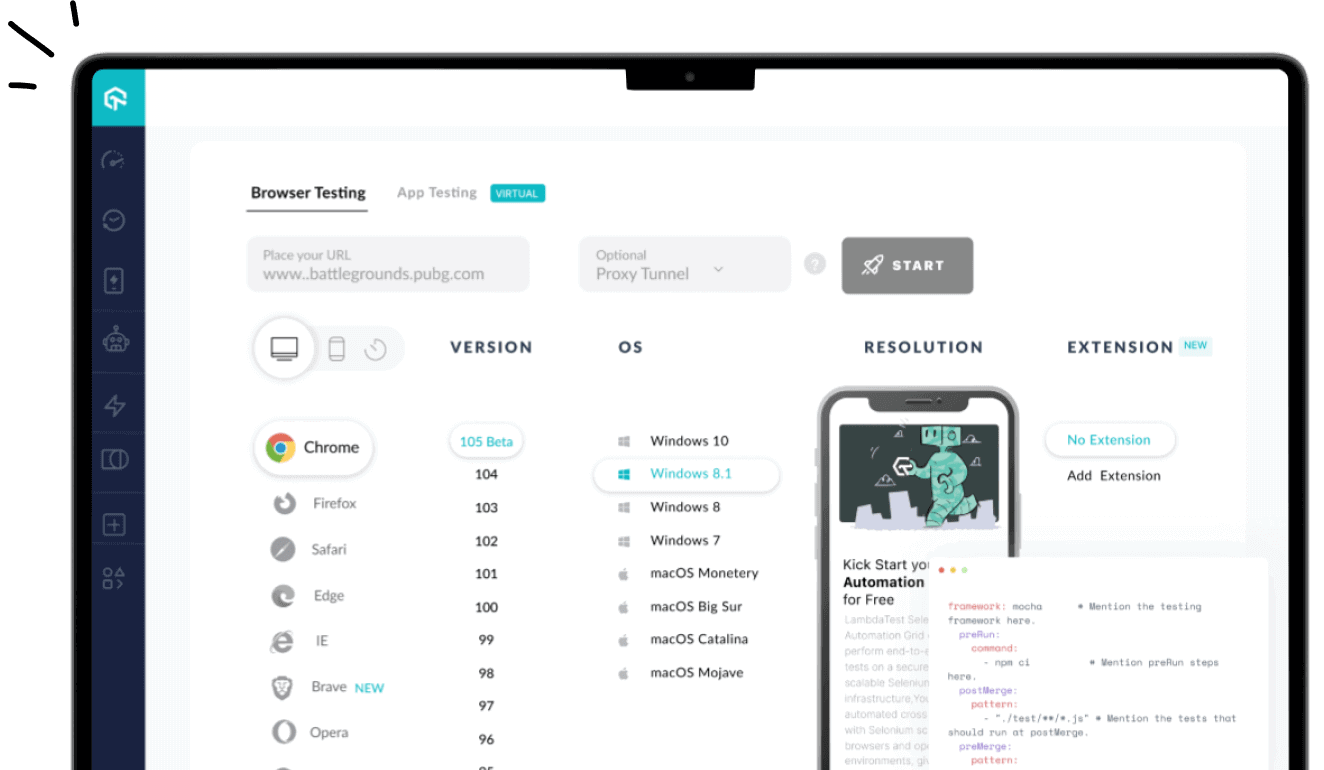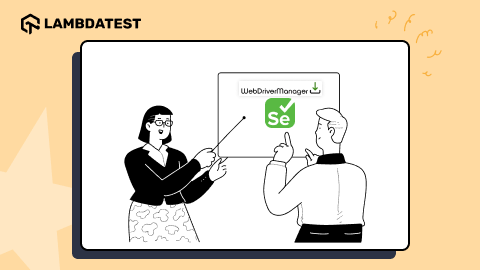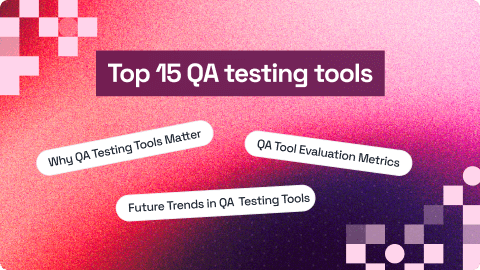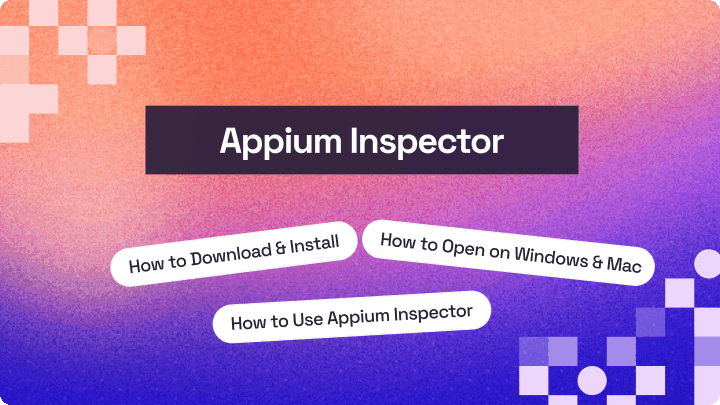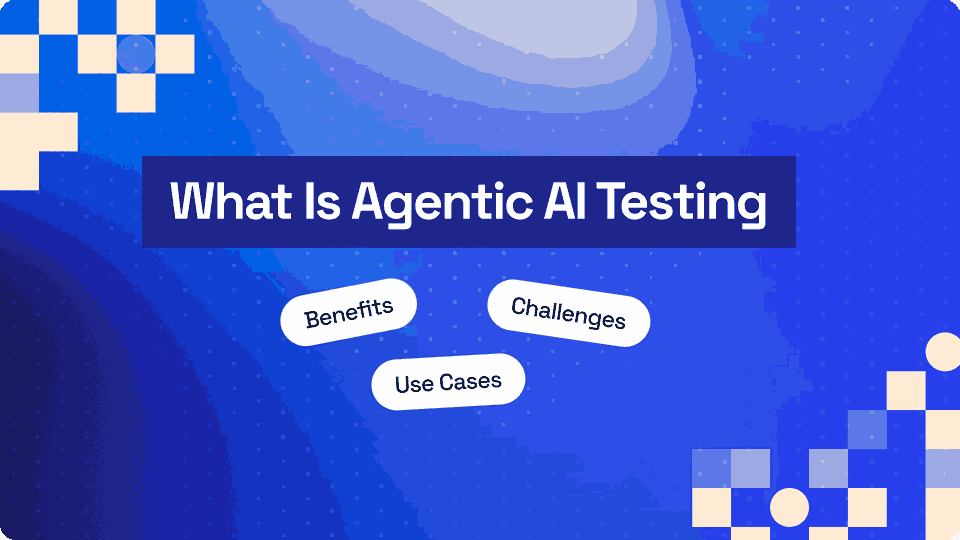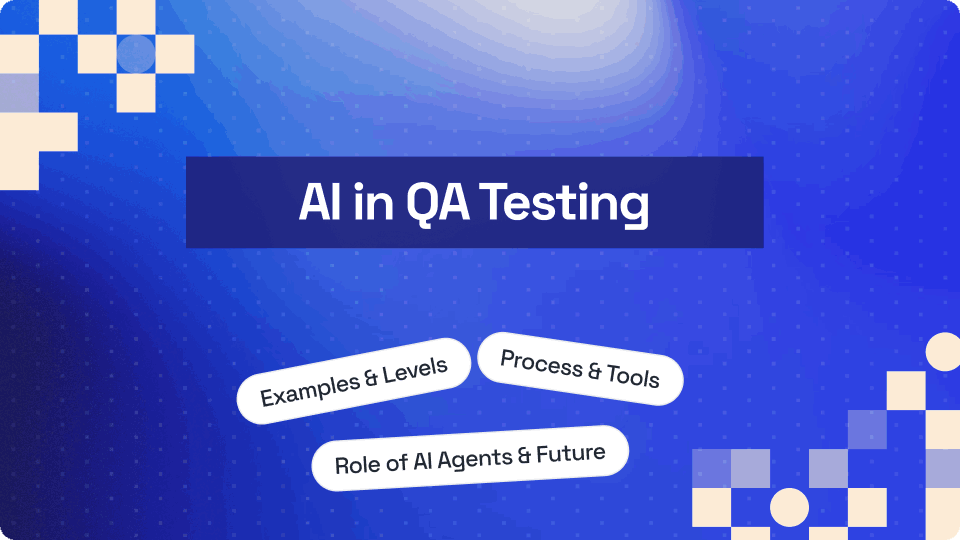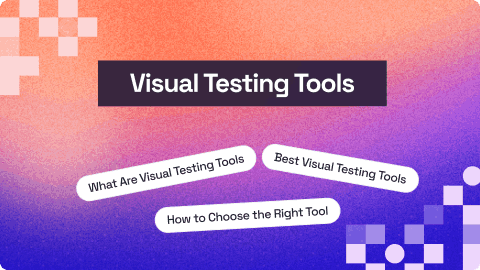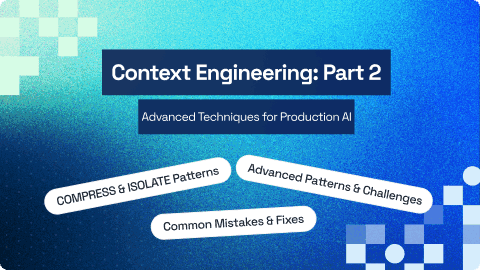Voice AI Revolution: Why Business Needs AI Voice Agents in 2025
Srinivasan Sekar
Posted On: September 30, 2025
19 Min
- $62 Billion Problem That Voice AI Solves
- The Voice AI Market Explosion
- Why 99.7% Reliability Matters?
- ROI That Makes CFOs Happy
- What Success Looks Like In Implementation?
- Window of Opportunity for Competitive Advantage
- Critical Testing Phase: Ensuring Voice AI Reliability
- 2025 Business Reality Check
- Broader Business Impact
- Technology Behind the Magic
- Common Implementation Pitfalls to Avoid
- Future Is Voice: What’s Next
- Frequently Asked Questions (FAQs)
The change from reactive to proactive customer service is here. Voice AI agents are not only changing how businesses work, but they are also completely changing what customers expect.
Overview
Voice AI is technology that understands, processes, and responds to human speech, enabling tasks like virtual assistants, customer service automation, and real-time voice-driven interactions.
What Problems Does Voice AI Solve?
Voice AI solves critical business challenges by answering missed calls, capturing leads, recovering lost revenue, and automating phone interactions efficiently.
- Missed calls: Small businesses often miss 40% of calls during peak hours, losing sales and trust; Voice AI answers every call automatically.
- Leads lost: Home services lose 27% of inbound calls, limiting conversions; Voice AI greets, qualifies, and routes every caller efficiently.
- Revenue gap: Businesses forfeit over $126,000 annually due to unanswered calls; Voice AI recovers missed revenue by handling each interaction reliably.
- Phone reliance: With 80% of communications over the phone, missed calls disrupt operations; Voice AI manages calls consistently, reducing inefficiencies and lost opportunities.
- Automation: Voice AI answers, qualifies, and routes calls instantly, ensuring no leads are lost, boosting sales, improving customer experience, and enhancing efficiency.
Why Is Testing Critical for Voice AI Reliability?
Before a voice AI interacts with real customers, thorough testing is essential. Platforms like LambdaTest Agent to Agent Testing lets developers and testers rigorously test voice AI agents across real world scenarios.
It enables:
- Automated Call Testing: Simulates hundreds of calls, verifying AI responses in realistic scenarios, ensuring accuracy and consistent behavior before real customer interactions.
- Edge Case Validation: Identifies complex or rare customer situations that could cause failures, allowing AI behavior to be refined for reliability.
- Performance Under Load: Tests high call volumes to ensure AI maintains response speed, accuracy, and quality even during peak operational periods.
- Integration Testing: Verifies smooth handoffs between AI and human agents, preventing dropped calls and ensuring seamless customer experiences.
- Multi-scenario Testing: Validates workflows like bookings, complaints, sales, and technical support, ensuring AI performs consistently across all customer interaction types.
The $62 Billion Problem That Voice AI Solves
Imagine this: it’s a busy Tuesday at 2:30 PM. A potential customer calls your business and says they want to buy something for $5,000. The phone rings once, twice, three times… no response. They hang up, call your competitor, and never think about your business again.
This happens millions of times every day in the United States. The numbers are shocking and show a big chance that most people miss. This underscores the growing for voice agents.
The Missed Call Crisis: Real Numbers, Real Effects
Global forecasts show exponential growth, confirming that voice AI is more than a trend, it is a business-critical technology that early adopters can leverage.
- Small businesses miss up to 40% of incoming calls during peak hours when team members are occupied with other tasks. – U.S. Chamber of Commerce.
- Home service businesses miss around 27% of their inbound calls. – Invoca
- The average business loses $126,360 annually due to unanswered calls. – Local Splash
For context, according to Unicom, 80% business communications still take place over the phone, making this missed call epidemic particularly devastating for revenue generation.
The Voice AI Market Explosion: Numbers Don’t Lie
The voice AI industry isn’t just getting bigger; it’s getting huge. The market data paints a clear picture of where smart businesses are putting their money:
Market Size and Growth Projections
- The global AI voice generator market was valued at $3.0 billion in 2024 and is expected to reach $20.4 billion by 2030, with a CAGR of 37.1%. – Markets and Markets
- The AI voice generators market was estimated at $3.5 billion in 2023 and is projected to reach $21,754.8 million by 2030, growing at a CAGR of 29.6%. – Grand View Research
The North American Advantage
North America is leading in voice AI adoption, particularly in financial services, signaling early opportunities for companies ready to implement scalable solutions.
 Note
NoteTest your voice agents across real-world scenarios. Book a Demo!
Beyond the Demo: Why 99.7% Reliability Matters?
Edge case management is what makes some voice AI systems work well and others look good but not work in real life. It’s not just a matter of numbers; the difference between a system that works 90% of the time and one that works 99.7% of the time is the difference between a business tool and a business liability.
Real-World Complexity Voice AI Must Handle
Generic solutions fail in the real world. Only AI that navigates nuanced, multi-step interactions across industries delivers true value.
Every business faces unique scenarios that generic solutions can’t address:
Restaurant Challenges:
- I need a table for eight people, but two of them are in wheelchairs and we can’t eat nuts.
- Complex dietary restrictions combined with availability constraints.
- Handling cancellations during peak dinner rush.
Healthcare Scheduling:
- Insurance verification while scheduling appointments.
- Managing emergency vs. routine appointment priorities.
- Handling sensitive medical information with proper privacy protocols.
Professional Services:
- Multi-location businesses with different service offerings.
- Complex project scoping conversations that require nuanced understanding.
- Managing consultant availability across time zones.
The Economic Impact: ROI That Makes CFOs Happy
The benefits of using voice AI go far beyond just answering calls. Smart businesses are getting more than one benefit in many areas of their operations.
Direct Cost Savings
Traditional reception costs are steep compared to scalable AI solutions.
Traditional Reception Costs:
- Average receptionist salary: $35,000-$45,000 annually. – Salary
- Benefits and overhead: Additional 30-40% of salary. – U.S. Bureau of Labor Statistics
- Training and turnover costs: Industry average turnover every 4 months. – UKG Workforce Institute
- Total annual cost per reception position: $50,000-$70,000.
Voice AI Agent Costs:
- Annual subscription: $3,000-$12,000 depending on call volume.
- Setup and customization: $2,000-$8,000 one-time.
- Ongoing optimization: $1,000-$3,000 annually.
- Total first-year cost: $6,000-$23,000.
Revenue Generation Impact
Retailers that use Voice AI as part of their customer service strategies are seeing more sales, more customer engagement, and more brand loyalty.
The mathematics are compelling:
- If your business averages 50 inbound calls daily.
- With a 40% miss rate, you’re missing 20 calls daily.
- At an average revenue potential of $200 per call.
- You’re losing $4,000 in potential revenue daily.
- Annual missed revenue: $1.46 million.
A voice AI agent that captures even 70% of those missed opportunities generates an additional $1.02 million annually while costing less than $25,000 to implement and maintain.
What Success Actually Looks Like In Implementation?
It’s not a matter of whether to use voice AI; it’s a matter of how to do it in a smart way.
The Best Mix: People and AI
The main point is that voice AI doesn’t take the place of human judgement; it makes people better at what they do.
Effective Division of Labour:
AI takes care of scheduling appointments, answering basic questions, gathering information, and doing initial triage. People handle solving hard problems, dealing with emotions, building high-value relationships, and negotiating with subtlety.
Industry-Specific Applications
Each industry has distinct workflows, and voice AI adapts to those nuances.
Healthcare Practices:
- Scheduling and rescheduling appointments 24/7.
- Pre-verification of insurance.
- Requests for prescription refills.
- Protocols for emergency triage.
Professional Services:
- Lead qualification and setting up the first meeting.
- Questions about services and basic pricing information.
- Collecting documents and getting new clients started.
- Setting up a follow-up appointment.
Retail and eCommerce:
- Questions about the status of an order.
- Processing returns and exchanges.
- Information about where to find products and stores.
- Routing for customer support escalation.
Window of Opportunity for Competitive Advantage is Closing
Business technologies that change things a lot tend to follow a predictable adoption curve. We’ve seen it with social media marketing, mobile apps, websites, and now voice AI.
The Early Adopter’s Edge
In 2025, companies that use voice AI will have several advantages over their competitors:
- Market Positioning: Being the first to come up with new ways to improve the customer experience.
- Cost Structure: Lower costs for putting things into place than what the market will charge in the future.
- Learning Curve: Time to improve and optimise systems before they become standard.
- Talent Acquisition: Get access to specialised voice AI talent before the competition heats up.
Signs That You’re Falling Behind
These red flags indicate your competitors are pulling ahead.
- Competitors saying “available 24/7” when you’re not.
- Customers are unhappy with how hard it is to reach them by phone.
- Staff members are overwhelmed with routine phone tasks during busy times.
- Not being able to answer calls during lunch breaks, meetings, or after work.
- Customers asking, “Do you have a system for booking automatically?”
Critical Testing Phase: Ensuring Voice AI Reliability
Before using any voice AI solution to talk to real customers, it needs to be thoroughly tested. This is where specialised testing platforms prove to be invaluable.
LambdaTest Agent-to-Agent Testing is the best way to check voice AI. This platform enables automated testing of phone-based AI agents by simulating realistic caller scenarios:
- Automated Call Testing: Run hundreds of test calls to validate AI response accuracy across different scenarios.
- Edge Case Validation: Test complex customer situations that could break standard AI responses.
- Performance Under Load: Simulate high call volumes to ensure your voice AI maintains quality during peak times.
- Integration Testing: Verify seamless handoffs between AI agents and human agents.
- Multi-scenario Testing: Test appointment booking, complaint handling, sales inquiries, and technical support flows.
This testing phase is crucial because the difference between a demo that works 9 times out of 10 and a production system that works 997 times out of 1000 lies in comprehensive edge case testing. LambdaTest Agent to Agent Testing platform ensures your voice AI is production-ready before it ever answers a real customer call.
To get started, refer to this Agent to Agent Testing guide.
The 2025 Business Reality Check
Voice AI isn’t just a technology trend; it’s a fundamental shift in how businesses operate.
Questions Every Business Owner Must Answer
These five questions determine whether your customer experience is future-ready:
- Customer Accessibility: Can your customers reach you 24/7, or are you limited by human availability?
- Scalability: When your business grows 50%, can your phone handling capacity scale proportionally without linear cost increases?
- Consistency: Does every caller receive the same quality of service regardless of when they call or which staff member is available?
- Data Collection: Are you capturing and analysing every customer interaction to improve service delivery?
- Competitive Response: When your competitors deploy voice AI, how will you differentiate your customer experience?
Beyond Customer Service: The Broader Business Impact
Voice AI implementation creates ripple effects throughout business operations that extend far beyond answering phones.
Operational Intelligence:
Every voice interaction generates valuable data:
- Common customer pain points and questions.
- Peak call time patterns for staffing optimization.
- Geographic distribution of inquiries.
- Service improvement opportunities based on conversation analysis.
Staff Empowerment:
When routine calls are handled by AI, human staff can focus on:
- Complex problem-solving that requires creativity.
- Building deeper customer relationships.
- Strategic business development activities.
- Skills development and professional growth.
Brand Differentiation:
Voice is one of the most powerful unlocks for AI application companies. As models improve, AI voice will become the wedge, not the product.
Businesses using voice AI can differentiate through:
- Consistent brand personality in every interaction.
- Multilingual customer support without hiring multilingual staff.
- 24/7 availability that matches customer expectations.
- Seamless integration between voice and digital touchpoints.
The Technology Behind the Magic
Understanding the technical capabilities helps businesses make informed implementation decisions.
Voice AI Capabilities (2025):
- Natural language processing that handles conversational nuances.
- Multi-turn conversation management for complex inquiries.
- Real-time integration with business databases and systems.
- Emotion recognition and appropriate response modulation.
- Seamless handoff to human agents when necessary.
- Advanced sentiment analysis for proactive customer service.
- Predictive conversation routing based on customer history.
- Multi-language real-time translation.
- Integration with IoT devices for comprehensive customer context.
- Advanced voice synthesis for personalized brand voices.
Common Implementation Pitfalls to Avoid
Learning from others’ mistakes accelerates successful implementation.
Technical Pitfalls:
- Insufficient Training Data: Failing to provide enough conversation examples for AI learning.
- Poor Integration Planning: Not considering how voice AI connects with existing business systems.
- Inadequate Testing: Launching without comprehensive testing across various customer scenarios.
Strategic Pitfalls:
- Over-Automation: Trying to automate complex scenarios that require human judgment.
- Under-Communication: Failing to inform customers about new AI-assisted service options.
- Neglecting Staff Training: Not preparing human staff for effective AI collaboration.
Operational Pitfalls:
- Ignoring Analytics: Not monitoring and optimizing AI performance based on real usage data.
- Static Implementation: Setting up the system once and never iterating or improving.
- Brand Misalignment: Using generic AI voices that don’t match company personality.
The Future Is Voice: Preparing for What’s Next
The voice AI revolution is just beginning. Businesses that establish strong foundations now will be best positioned for upcoming innovations.
2025-2027 Predictions:
- Voice AI will become the primary customer service interface for 60%+ of businesses.
- Integration with augmented reality will create immersive customer service experiences.
- Predictive voice AI will proactively reach out to customers before they call with problems.
- Voice commerce will enable customers to make purchases entirely through conversation.
Preparing Your Business:
- Start with Core Use Cases: Focus on the 20% of scenarios that handle 80% of your calls.
- Invest in Data Quality: Clean, organized customer data enables more sophisticated AI capabilities.
- Build AI-Friendly Processes: Design business workflows that accommodate both human and AI interaction.
- Develop AI Governance: Establish policies for AI decision-making and human oversight.
Conclusion: The Choice Is Clear, The Time Is Now
There is a lot of proof. Voice AI isn’t something that will happen in the future; it’s something that businesses need to do right now. The companies that succeed in the next ten years will be those that recognize this period as their equivalent of the website boom of the 2020s. Your competitors get stronger every day you wait.
Not only do you lose money when you miss a call, but you also lose a customer who might never give you another chance. Every routine phone task that your staff does is an opportunity cost that grows every day. The question isn’t if voice AI will become common in your field. The question is if you’ll be in charge of the change or if you’ll be trying to catch up.
Your Next Steps are Clear:
- Check how well your phone is working right now – how many calls are you missing? What effect does it have on revenue?
- Figure out how much money you could make by using the framework to understand your own business case.
- Pick your implementation partner, look into voice AI platforms that meet your business needs and the needs of your industry.
- Start small and think big. Start with the things you do the most and grow from there.
- Measure and optimise; use data to make your voice AI work better all the time.
Organizations that view voice AI as the equivalent of a new website will dominate their markets. The question is, will you be one of them?
Ready to join the voice AI revolution? The future of customer service is calling literally. Make sure you’re there to answer.
Frequently Asked Questions (FAQs)
How does a voice AI agent work?
A voice AI agent listens to spoken input, interprets meaning using natural language processing, and responds using text-to-speech. It continuously learns from interactions to improve accuracy. This allows businesses to automate calls, answer queries instantly, and deliver consistent customer experiences efficiently.
Can voice AI agents handle multiple languages?
Yes, modern voice AI agents support multiple languages and dialects. You configure language settings and train models to understand accents and context. This enables global customer support without extra staff, improving accessibility and keeping conversations natural and effective across markets.
What are the benefits of voice AI agents?
Voice AI agents save time, reduce operational costs, and provide consistent customer service. They handle repetitive tasks, offer real-time responses, and deliver valuable analytics, allowing businesses to improve efficiency, scale support, and enhance the overall customer experience effectively.
Are voice AI agents secure?
Security depends on the platform and implementation. Reputable providers offer encrypted communication, secure data storage, and compliance with privacy regulations. Always monitor access controls and data handling practices to ensure sensitive customer information remains protected while using AI voice solutions safely.
How can I integrate a voice AI agent with my systems?
Integration usually involves APIs, webhooks, or SDKs provided by the AI platform. You connect the agent to CRM, support software, or databases so it can access relevant information. Proper integration ensures smooth automated workflows and accurate, real-time responses for users.
Which industries benefit most from voice AI agents?
Industries like customer support, healthcare, banking, and retail gain the most. Agents can handle appointments, answer inquiries, provide updates, and resolve common issues. Businesses save staff time, maintain consistency, and deliver 24/7 service that meets customer expectations effectively.
How do I train a voice AI agent?
You start by feeding it conversation data, defining intents, and mapping responses. Continuous testing and real-user feedback refine accuracy. Regular updates ensure it understands diverse phrasing, accents, and edge cases, keeping interactions smooth, natural, and highly reliable for customer engagement.
What hardware or software is needed for a voice AI agent?
You need a cloud AI platform or on-premises server, microphones for voice input, and speakers for output. Software includes speech recognition, natural language processing, and text-to-speech modules. Proper configuration ensures the agent can handle multiple calls efficiently and provide consistent performance.
Can a voice AI agent handle complex customer queries?
Yes, with proper training and integration with knowledge bases or CRMs, voice AI agents can handle complex queries. They may escalate certain cases to humans when necessary, but routine multi-step tasks can be managed autonomously, improving response times and customer satisfaction effectively.
How do I get a phone number for my voice AI agent?
You obtain a number from cloud communication providers like Twilio or Plivo. They offer local, toll-free, or international options. Once linked to your agent, customers can call directly, enabling immediate interaction and professional communication without additional infrastructure or staff requirements.
Citations
- Voice AI in Firms: https://papers.ssrn.com/sol3/papers.cfm?abstract_id=5395709
Co-Author: Sai Krishna
Sai Krishna is a Director of Engineering at LambdaTest. As an active contributor to Appium and a member of the Appium organization, he is deeply involved in the open-source community. He is passionate about innovative thinking and love to contribute to open-source technologies. Additionally, he is a blogger, community builder, mentor, international speaker, and conference organizer.
Author

